10 Giant Menorahs That Will Light Up for Hanukkah in NYC
From Brooklyn to the Bronx, we’ve rounded up the most exciting giant menorahs that will light up throughout the next eight evenings!


Located in the heart of the East Village, Tompkins Square Park is a lasting vestige of New York City’s grittier past. While it’s surrounded by businesses and restaurants today, the park was once a crime-ridden, gathering place for homeless people, as well as the site of various riots during the late 1900’s. With such a blighted history, it comes as no surprise that the 10.5-acre green space is full of interesting secrets.
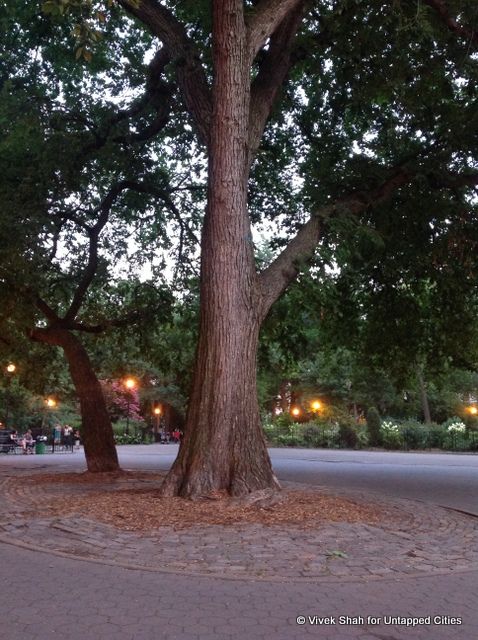
Take a stroll through Tompkins Square Park and you may notice the collection of American Elm trees lining the area. The sight is rare to come by, as many elms were killed by a spreading fungus, known as Dutch Elm Disease, which swept across the country in the 1930s. Of the assemblage, one tree particularly stands out amongst the rest. Located at the park’s center, it dates all the way back to the park’s founding in 1873, and holds special significance to Hare Krishna followers. It was under this tree, on October 9th, 1966, that the movement’s founder, A.C. Bhaktivedanta Swami Prabhupada recorded the first outdoor chanting session of the Hare Krishna mantra outside of India. In total, the event would last two hours, consisting of music played on various instruments, including cymbals and tambourines. Today, it is recognized as the site where the religion was founded in the U.S, and adherents often come to pay tribute to the tree by leaving items around its base.
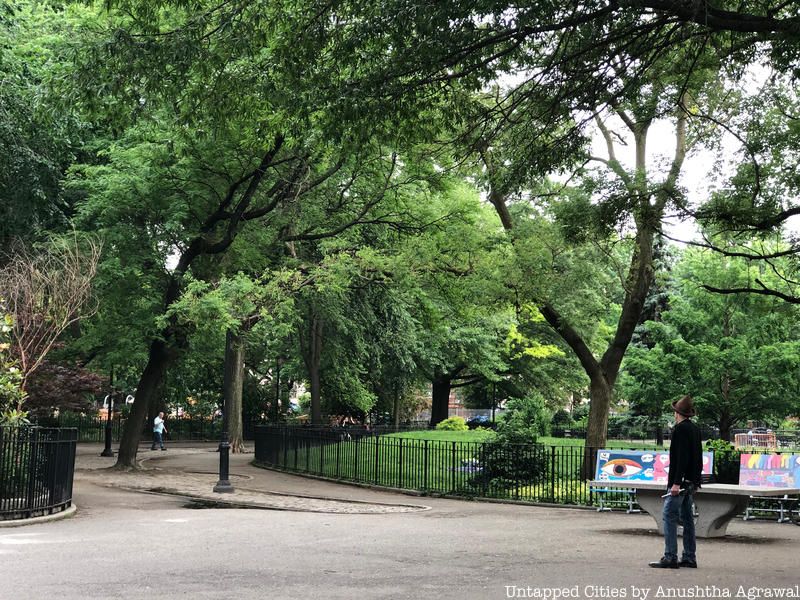
The HOWL! Festival is known for celebrating artistic diversity and freedom of expression. Taking place in Tompkins Square Park every June, the event was inspired by late poet and philosopher Allen Ginsberg who famously lived in the East Village – first on the third floor of 206 East 7th Street (pictured above) and later on East 2nd Street. (He was even a participant in Prabhupada’s chanting session.) To honor his legacy – and his controversial poem “Howl,” which eventually gave rise to a censorship case – HOWL! Festival was founded in 2003, inviting thousands of people for performances in art, music, dance and more. As an iconic gathering place for poets, musicians and artists from all walks of life, the East Village provides a perfectly suited backdrop for the event.
With the release of her debut album Horses, Patti Smith became an iconic figure in New York City’s punk rock scene. Yet, before her rise to fame and the various accolades that came with her craft, Smith was an “unknown” runaway from New Jersey, who moved to New York City in 1967. While working at a book store, she met photographer Robert Mapplethorpe, who is known today for his controversial images, including male and female nudes, and most notably, the underground BDSM scene in the 1960s and 70s. She would meet him again in another instance, before running into him in Tompkins Square Park while on a date with an older writer. In a desperate attempt to end the date, she asked Mapplethorpe to pretend to be her boyfriend, which eventually gave way to a whirlwind romance, inspiring her award-winning memoir Just Kids.
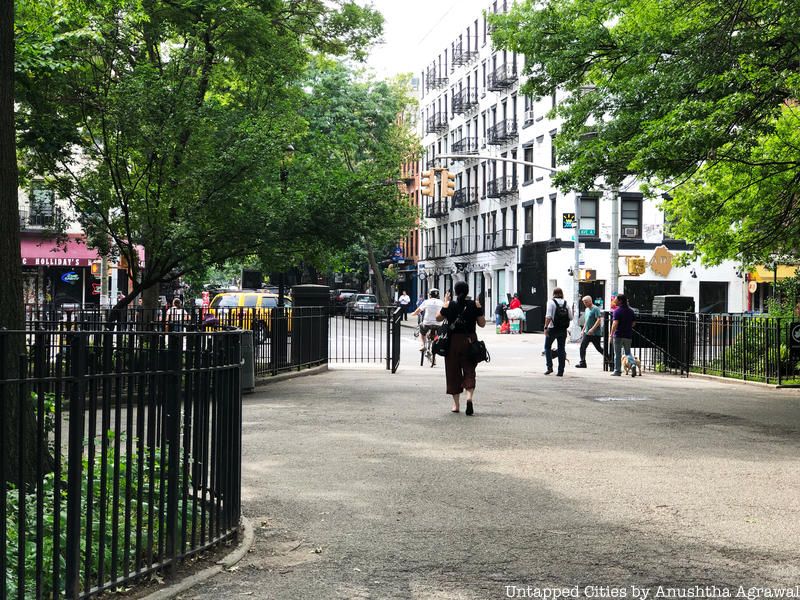
During the 17th century, Peter Stuyvesant, the last director general of the New Netherland colony, owned the land that now encompasses Tompkins Square Park. Former Governor of New York (and Vice President of the U.S. under James Monroe) Daniel D. Tompkins later acquired it, and it was soon marked for development as a public square. By 1834, ownership of the property had transferred over to the city, which took on the responsibility of landscaping the site between the years 1835 and 1850. At the time, the land originally consisted of salt marsh and open tidal meadows (“Stuyvesant meadows”) – once the largest ecosystem in Manhattan.
Before Tompkins Square Park opened to the public in 1850, the Commissioners’ Plan of 1811 called for an on-site market. The proposed project, which never came to fruition, would have stretched from First Avenue to the East River. Today, little remains of its swampy and muddy past.
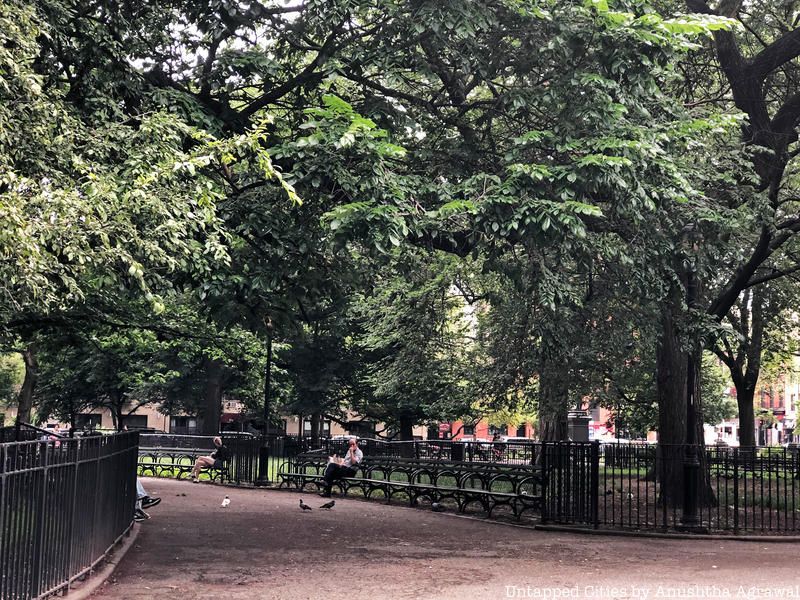
In 1966, the city finished constructing a bandshell near the southern end of Tompkins Square Park, which was used for concerts, rallies, and other crowd-gathering events that frequently took place during NYC’s grittier history. At the time, the park was a popular site for various riots, including the Tompkins Square Park riot of 1874 (pitting the NYPD and thousands of unemployed civilians against each other), the riot of 1988 (in protest of the park’s newly mandated 1 a.m. curfew that barred homeless encampments), the deadly Draft Riots (in protest of ongoing Civil War Drafts), and a series of demonstrations against the Vietnam War that took place in the 1960s.
Over the years, the bandshell came to symbolize many things: to city officials, it was representative of the disorder of the park. (As noted in the New York Times, the homeless would frequently sleep there.) To others, it was a rallying spot and a public forum, where people would gather to voice their opinions.
In midst of a protest that took place during a Memorial Day concert in 1991, the park was shut down for renovations that included the destruction of the bandshell. New playgrounds were constructed and sidewalks were replaced, but the bandshell was never rebuilt. While many people in the East Village believe the area is now safer, many still associate the loss with the end of a movement. Some have even claimed that the area has become more susceptible to gentrification following the incident.
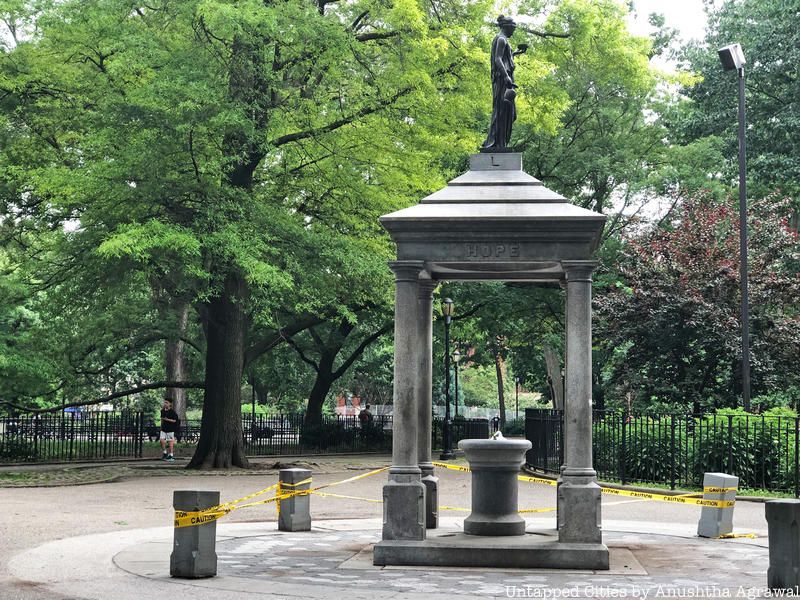
As we highlighted in another post, New York City has an odd tendency to refer to public spaces of all shapes and sizes as “square.” Have you ever paid a visit to Madison Square Garden or Foley Square? If so, you might have already taken notice of their distinctive shape (hint: very not-square-like). Tompkins Square Park is the closest to a near-perfect (and not rectangular) square when viewed from an aerial perspective.
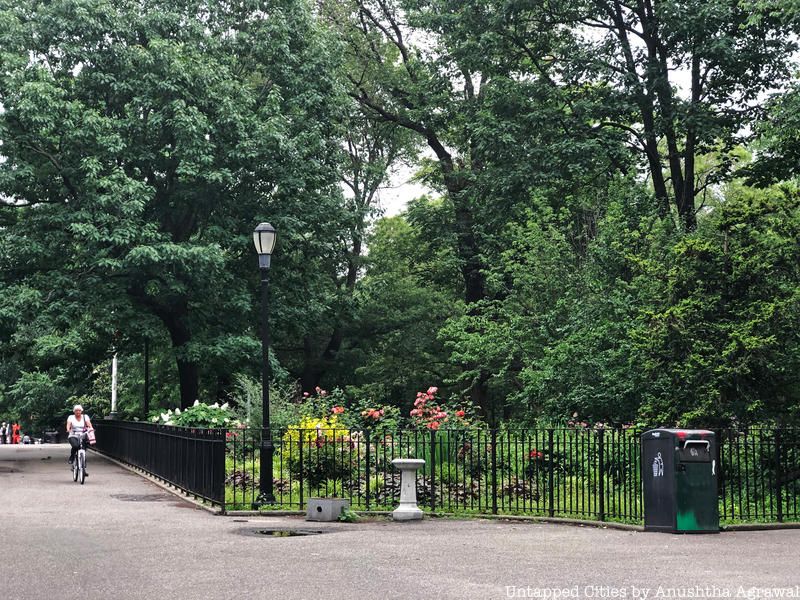
By the 1980s, Tompkins Square Park was a high-crime area that was filled with encampments of homeless people. It was the site of illicit drug deals and violence, sparked, in many instances, by riots between political activists and law enforcement. Arising out of the framework of New York City’s provocative history is the gruesome murder of Monika Beerle who was killed and dismembered by ex-lover Daniel Rakowitz, a marijuana dealer and self-proclaimed cannibal, nicknamed “The Butcher of Tompkins Square.” According to reports, Rakowitz had made soup out of Beerle’s body by boiling her head and brains, which he proceeded to serve to the homeless in Tompkins Square Park.
In light of his confession, Rakowitz was arrested but was found not guilty of the 1989 murder by reasons of insanity. Since the conclusion of the first trial in 1991, he has been living in Kirby Forensic Psychiatric Center on New York City’s Wards Island. In 2004, another jury found Rakowitz no longer dangerous but decided that he was still mentally ill and should remain institutionalized.
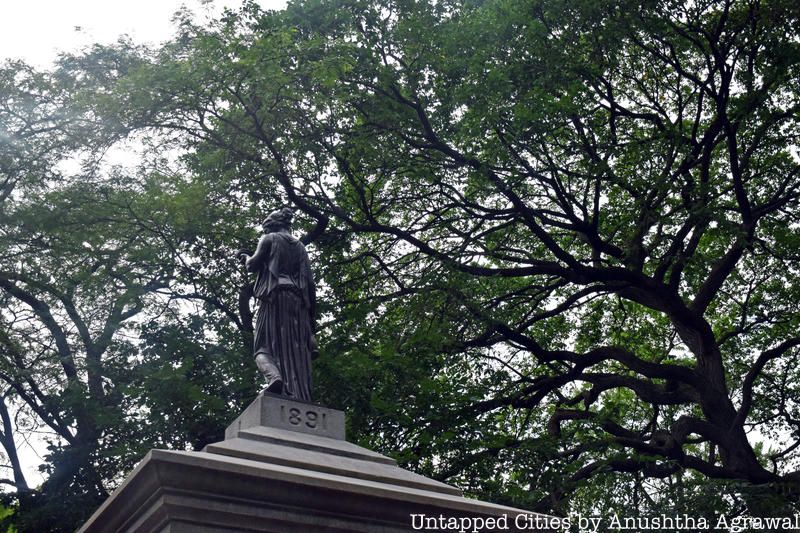
In order to clear space for an open parade ground for the Seventh Regiment of New York (a Union Army infantry regiment during the American Civil War), the New York State Legislature ordered the City to remove a number of trees within Tompkins Square Park in 1866. A few Sycamore trees, planted during the park’s creation, were left untouched and still exist to this day. They are believed to be the oldest trees in the park; one can be found along 10th Street, and the other is located on Avenue A at 9th Street.
Located in Tompkins Square Park, on 500 East 9th Street, Tompkins Square Dog Run is the first (and oldest) dog run in New York City, established in 1990 as part of a major restoration effort of the park. In 2008, the dog park also underwent a renovation, costing $450,000.00, which fitted the site with new amenities including three swimming pools, a tree deck, bath areas and hoses, picnic tables, underground drainage, and a cutting-edge running surface made from decomposed granite sand. Funds to maintain the park are raised by the community through events such as the Annual Tompkins Square Halloween Dog Parade, the biggest dog Halloween party in the U.S., which invites more than 2,000 spectators annually.
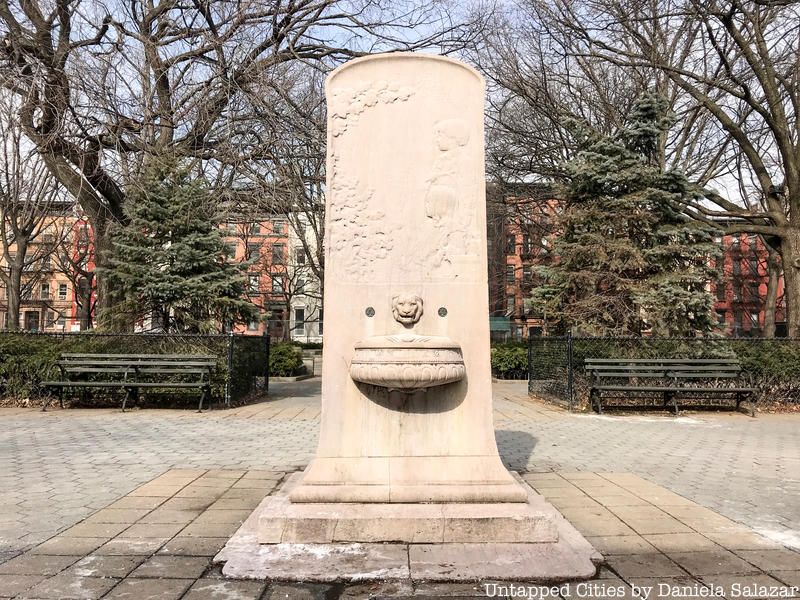
Tompkins Square Park is home to the Slocum Memorial Fountain, located on the north side of the park. The fountain, which was dedicated in 1906, pays tribute to the General Slocum passenger steamboat disaster that took place on June 15, 1904. Prior to the September 11th attacks, the incident resulted in the greatest death toll in NYC history, claiming the lives of over 1,000 victims – the majority of whom were German immigrant mothers and children. Following the tragic event, a black shroud surrounded Little Germany in the Lower East Side as families began to move out of the neighborhood. To this day, it remains the worst inland-water, peacetime tragedy in U.S. history, as noted by NYC Parks.
In honor of the unidentified dead, a monument was erected in 1905 in Middle Village, Queens, where many of the victims are buried. The Slocum Memorial Fountain, created by sculptor Bruno Louis Zimm, was also donated by the Sympathy Society of German Ladies, and installed in Tompkins Square Park. The monument is made of pink Tennessee marble and depicts two children looking to the left. It is fitted with a lion head spout and an inscription on the side reads the following:
“IN MEMORY OF THOSE WHO LOST THEIR LIVES IN THE DISASTER TO THE STEAMER GENERAL SLOCVM JVNE XV MCMIV”
The inscription on the front reads:
“THEY WERE EARTH’S PVREST CHILDREN, YOUNG AND OLD”
Next, read about The Top 12 Secrets of the East Village in NYC and Vintage Photos: Tompkins Square Park in the 1980s and 90s.
Subscribe to our newsletter